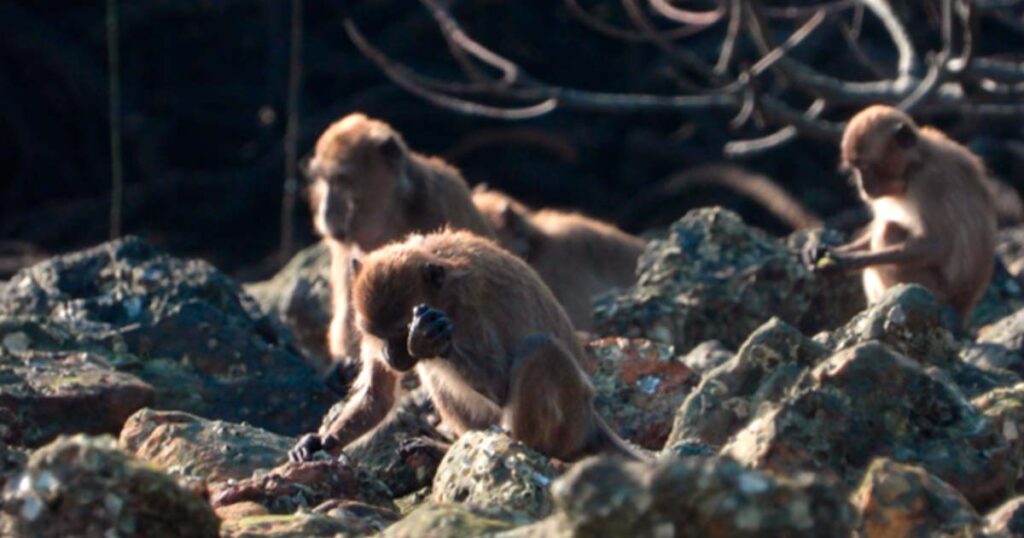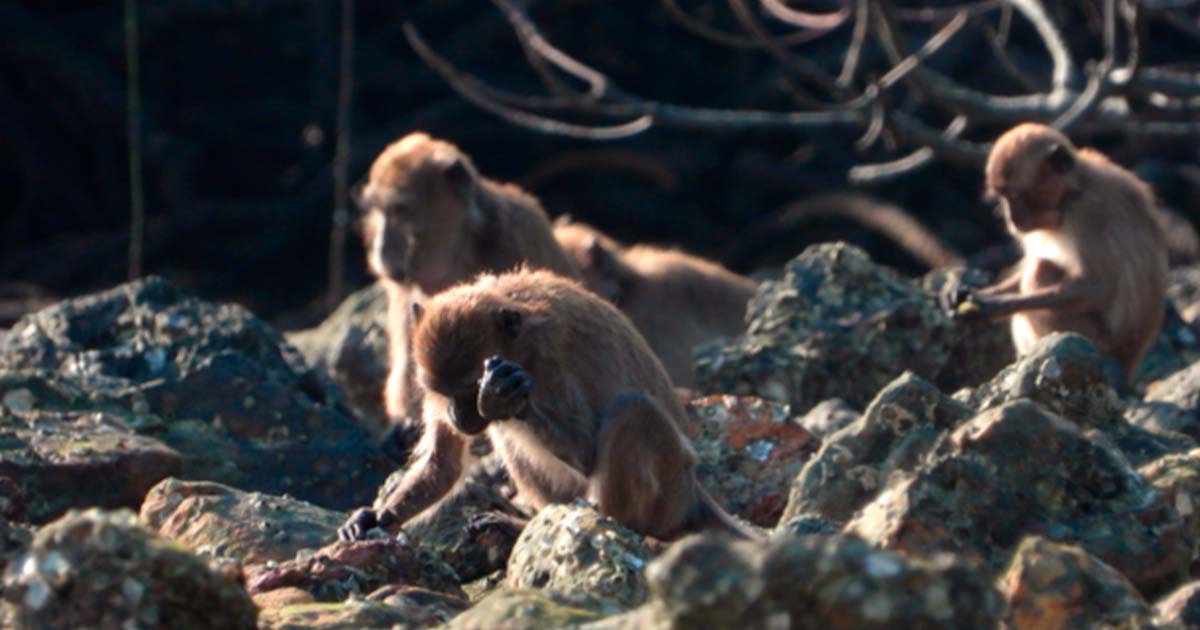

Archaeologists from the Max Planck Institute for Evolutionary Anthropology have announced their discovery of stone fragments that closely resemble ancient stone tools made by prehistoric humans. What is notable is that these apparently worked stone objects were actually made unintentionally by old world monkeys living in the forests of Thailand. Does this have implications for stone flakes taken to be tools at ancient hominin sites?
These industrious monkeys were not trying to make cutting or scraping tools. Yet they still produced pieces of rock with sharp edges perfect for cutting and scraping, as a side effect of their use of larger chunks of rocks to crack open hard nuts and shellfish. Impressively sharp flakes are sometimes chipped off during this process, and incredibly enough these rock slices look and feel a lot like some objects that have been identified as ancient stone tools purposely made by ancient humans and by ancient human ancestors.
Until now, it had been believed that hominins like Homo sapiens (modern humans) and Neanderthals were history’s only toolmakers. But the stunning results of this new study, which has just been published in Science Advances, call into question the identification of at least some ancient stone tools as human cutting or scraping objects.
This wouldn’t be the case for all of the tools identified, since many (if not most) ancient stone tools are found in archaeological contexts that show other indications of human settlement and activity. But isolated stone “tools” supposedly made by ancient toolmaking cultures may now require much more careful analysis than in the past, to be sure that they really are human artifacts.

Examples of sharp-edged flakes produced unintentionally by long-tailed macaques. (© Proffitt et al, 2023/Science)
If Monkeys Can Make ‘Tools’ Too, what Are the Ramifications?
The animals studied in this research were long-tailed macaques living in Phang Nga National Park along Thailand’s southwestern peninsular coast. The clever macaques use heavy stones to break open nuts and shellfish, and over time these stones have a tendency to break into pieces after repeated use. Pieces of these stones can be found all over the park land, and many of them do indeed bear a remarkable resemblance to the sharpened stone tools recovered from various ancient archaeological sites in East Africa.
“The ability to intentionally make sharp stone flakes is seen as a crucial point in the evolution of hominins, and understanding how and when this occurred is a huge question that is typically investigated through the study of past artifacts and fossils,” lead study author Tomos Proffitt stated in a Max Planck Institute for Evolutionary Anthropology press release.
“Our study shows that stone tool production is not unique to humans and our ancestors.”
Notably, this is not the first study that suggests some ancient stone tools could actually have been made by monkeys. A 2016 University of Oxford study published in the journal Nature revealed that capuchin monkeys living in Brazil’s Serra de Capivara National Park frequently created rock flakes and chips that looked exactly like prehistoric stone tools (these primates use hard quartz and quartzite rock to break open stones that contain mineral dust they like to lick). The authors of that study noted similarities between the shapes of the capuchin “artifacts” and some of the simpler tools associated with the ancient Oldowan culture, which is alleged to have been manufacturing stone tools in East Africa more than two million years ago.
Did Humans Make the First Sharp-Edged Tools by Accident?
Naturally, a lot of the focus on this study will be on the doubts raised about past identifications of stone tools as man-made artifacts. But another important aspect of the research is what it suggests about how ancient humans started using sharp-edged tools in the first place.
Were the earliest modern humans, or human ancestors living millions of years ago, manufacturing all these tools themselves? Or did they start out by experimenting with sharp rock chips and flakes created when they were using larger rocks to break open difficult-to-access food sources?
“Cracking nuts using stone hammers and anvils, similar to what some primates do today, has been suggested by some as a possible precursor to intentional stone tool production,” said Lydia Luncz, the senior study author and the head of the Technological Primates Research Group at the Max Planck Institute. “This discovery shows how living primates can help researchers investigate the origin and evolution of tool use in our own lineage.”
Healthy Skepticism Means Better Science
In order to uncover accurate information about the origin of important cultural practices, archaeologists must interpret ancient artifacts properly and not misidentify natural objects as man-made. In this instance, the situation is interesting because the “natural forces” that can produce objects resembling human tools are still emerging from the intelligent actions of a primate species.
From now on there may be added uncertainty about whether relatively simple sharp-edged stone tools taken from ancient sites were really made by humans as cutting tools. To reach a definitive conclusion researchers will need to rely on more than the presence of sharp edges on stone flakes to identify them as man-made. Such identifications will now require added context to make them fully accepted, meaning they will need to be found mixed in with other man-made objects, collections of animal bones, or other remnants of past human activity that make it obvious that the stone objects were really tools and were being used as such.
In the long run this added scrutiny will be beneficial to the archaeological profession, as its research into prehistoric toolmaking practices will be carried out with a bit more healthy skepticism than was present before.